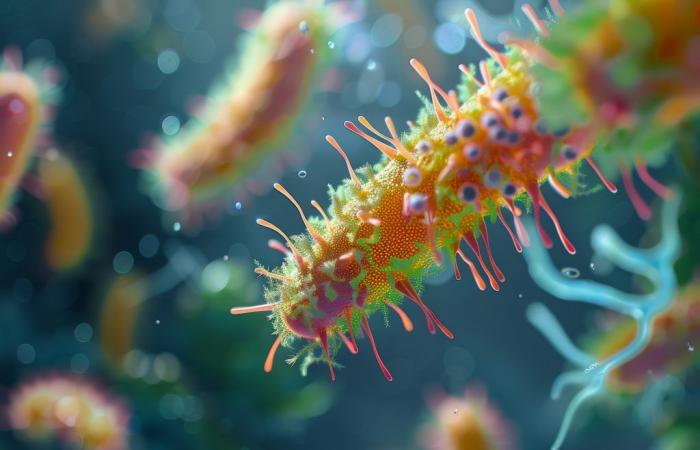This study is also fundamental for infectious disease experts and biologists who study bacteria. Harmful pathogens, like salmonella, make their way through a complex intestinal system where they are greatly outnumbered by good bacteria and immune cells. However, each year, salmonella is responsible for approximately 1.35 million illnesses and 420 deaths in the United States alone. To infect the host, this pathogen must pass through the intestinal wall.
These pathogens must therefore find vulnerable entry points in the intestine that allow them to invade and infect the body. “When ingested, salmonella reaches the intestines. There, they are greatly outnumbered by more than 100 trillion commensal bacteria, recalls lead author Yao-Hui Sun, a researcher affiliated with the departments of internal medicine, ophthalmology and vision sciences and dermatology.
A new bioelectric mechanism that allows bacteria to find the entry point
To understand how salmonella manages to find its way into the gut, researchers observed the movement of S. Typhimurium bacteria (a strain of Salmonella) and compared it to that of a harmless strain of Escherichia coli bacteria ( E.coli).
The authors point out that the intestine is a very complex organ. Its epithelial structure includes villi and lymphoid follicle-associated epithelium (LFA). The villus epithelium is made up of absorptive cells (enterocytes) with protrusions that aid in nutrient absorption. The EAF contains M cells covering small clumps of lymphatic tissue called Peyer’s patches. These M cells are responsible for sampling antigens. They act as the first line of defense of the immune system against microbial and food antigens.
The studycarried out on the mouse model of salmonella infection, reveals that these bacteria detect electrical signals in the EAF. They travel to the source of these signals, an area of the intestine where they find openings through which they can enter. This process of cellular movement in response to electric fields is called
galvanotaxieor electrotaxis.
- E. coli and Salmonella respond differently to bioelectric fields. They have opposite responses to the same electrical signal. While E. coli clusters next to the villi, Salmonella clusters at the EAF;
- the bioelectric field in the intestinal epithelium is configured in such a way that Salmonella takes advantage of it to be oriented towards the EAF, which is not the case for E. coli.
Previous research had described a process of chimiotaxie : With chemotaxis, bacteria sense chemical gradients and move toward or away from specific compounds. But the new study suggests that galvanotaxis of Salmonella to EAF does not occur through chemotaxis pathways.
The study thus describes for the first time, an alternative or complementary mechanism in the modulation of the targeting of Salmonella towards the intestinal epithelium.
New light on IBD: this mechanism has possible implications for other bacterial infections as well as their prevention and treatment: “It would be interesting to know whether IBD patients also exhibit these aberrant bioelectrical activities in the intestinal epithelium.”






